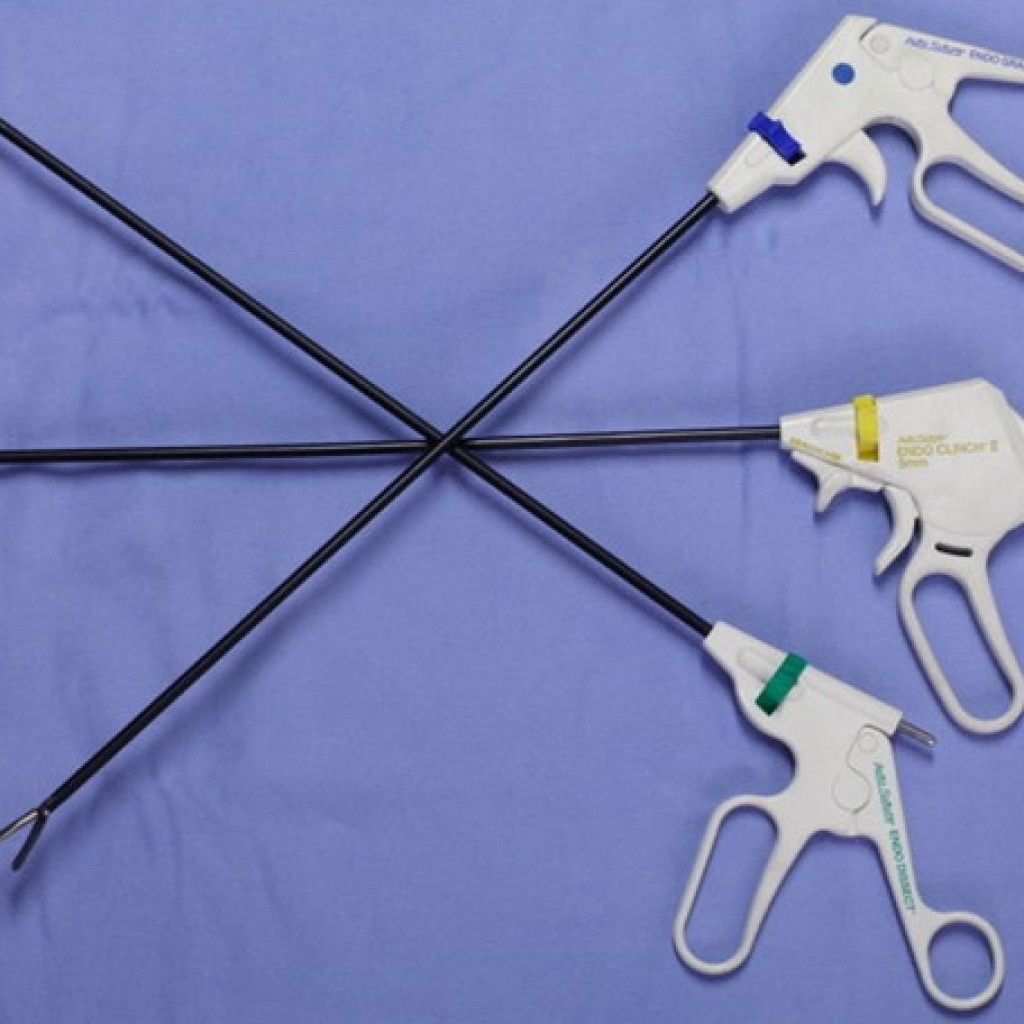WHAT DOES A GYNECOLOGIST DO

Obstetrics and gynecology are the medical department for the care of female reproductive organ’s health and handle the obstetric problems, even through surgery.
Gynecology doctor is a physician who has successfully finished the education and training in the management of pregnancy, labor, childbirth, including the identification and treatment of disorders and diseases.
When Is The Right Time for Your Daughter’s First Gynecology Appointment?
As girls develop into teenage, it’s important that they receive appropriate medical guidance.
For most teens, the first visit will include an outer examination of the genitals but not an inner examination of the generative organs, which is beginning at age 21 for healthful women. However, if your girl has irregular vaginal bleeding, painful periods, abnormal vaginal secretions or other issues that may be associated with her reproductive health, then see best gynecology doctor can focus into why the problems are happening and give solution for it.
What Does a Gynecology Specialist Do?
Best gynaecologist in Kolkata performs different tests and ensure their reproductive health. Throughout this test, doctor will physically examine the woman, perform STD tests, finish a breast exam and monitor the woman’s use of birth control. Gynecologist also checks vaginal infections and urinary tract infections in women complaining of lower abdominal pain or sexual pain.
The main duty of best gynecologist in India is to perform medical exams of women’s reproductive organs, looking out for possible issues and ensuring overall wellness. Many top gynecologist in India is obstetrics, which involves the protection of pregnant women and growing fetuses. Women who request abortions usually also consult a gynecology doctor with obstetric training.
Top Gynecologist in India are experts in all things pregnancy and baby related. They are the ones who help women pregnant and they also observe ongoing pregnancies to make sure that both mom and baby are growing and developing correctly. They will train the mother about what to do and will help her handle the pain associated with delivery. Treating the mother and baby immediately after birth usually also falls to this expert. Top gynecologist in India will carefully monitor new moms for complications both medical and emotional and will suggest care and treatment as needed.
What to Expect from Gynecological Visits?
Ready for your first gynecological visit, you may be thinking what the exam will be like. Best gynecologist in India motivates patients to ask about anything, even shameful or uncomfortable problems because such matters are probably the most important ones to address. When communicating with your health, no question can be considered foolish.
During the consultation, it’s important to be ready with information about your family medical history. In addition about your family, the physician will ask questions about individual health, like the age of menstruation started, when last period started and how long period usually lasts.
Women should directly make an appointment if they experience any of the following issues:
- Heavy pain in the abdomen or pelvis
- Abnormal pain in the vagina
- Unusual itching in or around the vagina
- Exposure to a sexually transmitted problems
- Severe pain during periods or abnormal periods
- Changes in breast size or changes in the skin of the breast
If you have any of the gynecological issues, Consult our Best Gynecologist in India for the solutions.
BEST GYNECOLOGY DOCTOR IN INDIA
Best gynecology doctor in India provides full treatments, care and services for related problems.
Young girls experiencing gynecological issues and they may not recognize what is happening with their bodies. Our gynecologist is one of the best gynecology doctor in India and provide a friendly, confidential and trusting situation for those suffering from menstrual issues, ovarian cysts, pelvic pain, congenital anomalies, genital injuries and pelvic infections.
Painful periods is the common cause of absenteeism from school and work in adolescents. Pediatric and Adolescent Gynecology concentrate on conditions of the uterus, ovaries, vagina and vulva. Gynecology doctor provides complete evaluation and specialized treatment for these conditions in babies, children, and teens.
Gynecologist may ask questions about you and your family to know if you have a history of diseases. If you have any doubts about the changes that may be happening to your body, consult our Gynecology Doctor India for the solutions.
Ask our Top Gynecologist in India about,
- Periods
- Acne
- Weight problems
- Feeling gloomy
- Sexually transmitted infections
- Drinking, drugs, smoking
Seeing best gynecologist in India can help you realize your body health. Doctor find issues early so they can be treated easily. Build a relationship with best Gynecology Doctor in India and understands your health problems.
Dr.Sankar DasMahapatra Best Gynaecologist in India
DGO, MS, Fellowship in Gynaecological, Lap Surgery (Sydney -Australia)
Gynaecologist & Obstrician, Infertility Specialist & Lapaoscopic Surgeon
Special Interest: Fibroids, High Risk Pregnancies, Hysterectomy, Hysteroscopy, In-Vitrofertilisation – Embryo Transfer (IVF – ET) , Laparoscopic Surgeries

Main Speciality: Gynaecology and Obstetrics
Experience: 20 Years
Contact Details: Phone: +91 92306 16647 | Email: sankardasmahapatra@gmail.com
Dr. Sankar Dasmahapatra did his MBBS (Bachelor of Medicine and Bachelor of Surgery) from NIL RATAN SIRKAR MEDICAL COLLEGE & HOSPITAL KOLKATA, India in 1988 and completed his internship in 1989. He completed his MS in GYNAECOLOGY & OBSTETRICS from PATNA MEDICAL COLLEGE, PATNA India in 1993. He is crowned with the prestigious Fellowship in Gynecological Endoscopic Surgery, Sydney, Australia, which is considered a remarkable advantage in the cutting-edge laparoscopic surgery procedure.
Professional Courses:
FOGSI TRAINING COURSE IN ULTRASOUND FROM 16.07.01 TO 29.07.01.
TRAINING IN ASSISTED REPRODUCTIVE TEACHNIQUE :INSTITUTE OF REPRODUCTIVE MEDICINE
HANDS ON TRAINING IN ENDOSCOPY FROM ERI MARCH 2000.
HANDS ON TRAINING IN ENDOSCOPY IN THE YEAR 2004 MODULE -2 FOGSI RECOGNISRD COURSE.
NATIONAL WORKSHOP IN ENDOSCOPIC SURGERY 2002.
NATIONAL WORKSHOP IN HYSTEROSCOPIC SURGERY IN THE YEAR 2002.
NATIONAL WORKSHOP IN COLPOSCOPY.
Attached Hospitals:
AMRI Hospital SaltLake, Columbia Asia Hospital, Charnock Hospital, Narayana Multispecialty Hospital
Emergency Number:
+91 98308 13736 / + 91 98300 78757
Chambers
MILLENIUM CLINIC
Location
Teghoria, VIP Road KANCHANJHUNJHA APARTMENT, KOLKATA 700059
Time
DAILY EXCEPT SUNDAY
7 p.m – 9 p.m
Phone
033 2570 3043 / 033 2570 6029
AMRI Hospital
AMRI Hospital, Salt Lake Address : JC 16 & 17
Monday, Wednesday & Friday
4 p.m – 6 p.m
91 98308 13736/ +91 9830078757
Charnock Hospital
Rajarhat & VIP Road Junction
Tuesday, Thursday& Saturday
4 p.m – 6 p.m
(By Appointment Only)
(OPD) 09831639000
Columbia Asia Hospital
IB-193, Sector-III, Salt Lake
x
+91 98308 13736/ +91 92306 16647
Gynaecological laparoscopy - Key hole surgery - Minimal invasive surgery in gynaecology

Laparoscopic Surgery also known as “Key Hole” surgery is the latest form of gynecological operations. Laparoscopic surgery means visualization & examination of the abdominal cavity by means of a telescope inserted through a small incision of 5 mm or 10 mm just above or below the umbilicus and then carrying out the surgical procedure with the help of slender instruments inserted through other small portals.
The abdominal cavity is first inflated with CO2 gas or air injected through a tubular needle known as Verres’ needle to create a working space inside the abdomen. Through the umbilical incision a trocar with a canula is passed inside the abdomen. The trocar is then removed and a telescope (Laparoscope) is inserted through the canula, which carries with an inbuilt lens system to send an image of the abdominal organs to the video camera and fibreoptic cables to transmit the light from the light source to illuminate the abdominal cavity. The magnified images are projected on monitors which can be visualized clearly by both the surgeon and assistants throughout the operative procedures.
After viewing the inside of the abdomen and localizing the pathology one or two more small incisions are made on the abdominal wall at vantage locations for other laparoscopic instruments to be inserted to carry out the procedure.
The first history of Laparoscopy dates back to the 10th century when Abulkasi, an Arabian physician attempted to visualize the cervix. The first full fledged laparoscopic surgery done was an appendectomy but performed by a gynaecologist. In the beginning Laparoscopy was done mainly for diagnostic purposes. The early genealogical operations using Laparoscopy were mainly for sterilization, but ever since Semm of Germany popularized operative gynaecological Laparoscopy by performing salphingectomy, myomectomy, oopherectomy, ovarian cystectomy and salphingostomy in 1974, operative Laparoscopy has gained widespread acceptance in gynaecology.
Today it can be truly said that the widest application of Laparoscopy is in gynaecology. Almost 90% of all gynaecological operations in developed countries like Europe and USA are performed laparoscopically and it has been undoubtedly accepted that wherever possible Laparoscopy is the better alternative to the conventional open surgery.
What are the gynaecological conditions which can be operated laparoscopically?
1. Hypersterectomy – Patients who have been advised hysterectomy (removal of uterus) for various disorders of the uterus can get the laparoscopic assisted vaginal hysterectomy (LAVH) or Total Laparoscopic Hysterectomy (TLH)
2. Myomectomy – Conservative operations on the uterus for removal of myomas (fibroids) can best be done wherever feasible.
3. Ovarian cystectomy (removal of cyst of ovary) and ovariotomy (removal of a diseased ovary) are better done laparoscopically.
4. Adhesiolysis (removal of adhesions) due to previous operations or infections or related with endometriosis especially in cases of infertility.
5. Ectopic pregnancy (pregnancy existing outside the uterus)
6. Diagnosis and treatment of various causes of infertility.
7. Undiagnosed chronic pelvic pain.
8. Tuboplasty (surgical reconstruction of fallopian tube for tubal obstruction in infertility)
Why should we offer laparoscopic surgery to the patients?
1. It gives rise to minimal tissue handling and much less tissue trauma to the other adjacent normal organs resulting in very less pain after surgery whereas in conventional open surgery there is more tissue handling and gives rise to reactionary swelling of the operated area and adjacent normal tissues, resulting in more post operative pain to the patient.
2. Very small incisions (0.5 to 1 cm) of Laparoscopy results in less amount of blood loss, less chance of wound infection and early healing of wound as compared to large incision (10 cm to 15 cm or bigger) of conventional surgery resulting in more amount of blood loss, more post operative pain, increased chances of wound infection, delayed healing of wound and more chances of developing hernia later on.
3. Blood loss is very less as compared to conventional surgery because even the smaller blood vessels are tied or coagulated before cutting and most of the laparoscopic cutting instruments coagulate the blood vessels while cutting.
4. Hospital stay in laparoscopic surgery is usually 1 to 3 days while in cases of conventional surgery the same procedures will require 7 days or more of hospitalization.
5. After operative Laparoscopy the patients can resume their normal day to day activity in a period of 1 to 2 weeks while in cases of conventional surgery the recovery period can extend up to 6 to 8 weeks or more.
6. For infertility patients laparoscopic surgery has come as a boon, as with minimal tissue handling and minimal blood loss thereby incurring much less chance of adhesion formation later on, the chances of achieving pregnancy are much greater than that attained by conventional surgery.
7. Very small incision produces less scarring and is much more cosmetic.
8. As far as the total expenditure is concerned, laparoscopic surgery comes out to be more cost effective than the conventional surgery in the long run because of the shorter hospital stay, decreased amount of medication and early return to work.
Where can one get laparoscopic surgery done?
Laparoscopic surgery can be done at a centre which has the complete set of laparoscopic equipments with all its back up facilities. It should be performed by a well qualified gynaecologist who is fully trained in the field of operative Laparoscopy.
Gynecologic Laparoscopy
Gynecologic laparoscopy is an alternative to open surgery. It uses a laparoscope to look inside your pelvic area. Open surgery often requires a large incision.
A laparoscope is a slender, lighted telescope. It allows a doctor to see inside your body. Diagnostic laparoscopy can determine whether you have conditions such as endometriosis or fibroids. It can also be a form of treatment. With miniaturized instruments, your doctor can perform a variety of surgeries. These include:
- ovarian cyst removal
- tubal ligation (surgical contraception)
- hysterectomy
Laparoscopy generally has a shorter healing time than open surgery. It also leaves smaller scars. A gynecologist, general surgeon, or other specialist may perform this procedure.
Reasons for Gynecologic Laparoscopy
Laparoscopy can be used for diagnosis, treatment, or both. A diagnostic procedure can turn into treatment.
Some reasons for diagnostic laparoscopy are:
- unexplained pelvic pain
- unexplained infertility
- history of pelvic infection
Conditions that might be diagnosed include:
- endometriosis
- uterine fibroids
- ovarian cysts or tumors
- ectopic pregnancy
- pelvic abscess (pus)
- pelvic adhesions (painful scar tissue)
- infertility
- pelvic inflammatory disease
- reproductive cancers
Some types of laparoscopic treatment include:
- hysterectomy (removal of the uterus)
- removal of the ovaries
- removal of ovarian cysts
- removal of fibroids
- blocking blood flow to fibroids
- endometrial tissue ablation (endometriosis treatment)
- adhesion removal
- reversal of tubal ligation (contraceptive surgery)
- burch procedure for incontinence
- vault suspension to treat prolapse
Preparing for Gynecologic Laparoscopy
Preparation depends on the type of surgery. You may need imaging tests. Your doctor might order fasting or an enema.
Tell your doctor about any medication you take. This includes over-the-counter drugs and supplements. You may need to stop them before the procedure.
Plan to have someone drive you home after surgery. A friend can pick you up or you can schedule a car service. You will not be allowed to drive yourself.
Procedure
Laparoscopy is almost always performed under general anesthesia. This means you will be unconscious for the procedure. However, you may still be able to go home the same day.
Once you are asleep, a small tube called a catheter will be inserted. This collects your urine. Then your abdomen will be filled with carbon dioxide gas. This is done with a small needle. The gas keeps the abdominal wall away from your organs. It reduces the risk of injury.
The surgeon will make a small cut in your navel. The laparoscope will be inserted. It transmits images to a screen. This gives your doctor a clear view of your organs.
What happens next depends on the type of procedure. For diagnosis, your doctor might take a look and then be done. If you need surgery, other incisions will be made. Instruments will be inserted through these holes. Then surgery is performed using the laparoscope as a guide.
Once the procedure is over, all instruments are removed. Incisions are closed with stitches. Then you will be bandaged and sent to recovery.
Advances in Laparoscopy
Robotic surgery is sometimes used for gynecological laparoscopy. Robotic arms are steadier than human hands. They may also be better at fine manipulations.
Microlaparoscopy is a newer approach. It uses even smaller scopes. This procedure can be done with local anesthesia in your doctor’s office. You won’t be completely unconscious.
Recovery After Laparoscopy
Once the procedure is over, nurses will monitor your vital signs. You will stay in recovery until the effects of anesthesia fade. You will not be released until you can urinate on your own. Difficulty urinating is a possible side effect of catheter use.
Recovery time varies. It depends on what procedure was performed. You may be free to go home a few hours after surgery. You might also have to stay in the hospital for one or more nights.
After surgery, your belly button might be tender. There may be bruises on your stomach. The gas inside you can make your chest, middle, and shoulders ache. There is a chance that you will feel nauseated for the rest of the day.
Before you go home, your doctor will give you instructions regarding medication and side effects. Your doctor may prescribe pain medication. You may also receive antibiotics to prevent infection.
Depending on the surgery, you may be told to rest for a few days or weeks. It may take a month or more to return to normal activities.
Serious complications of laparoscopy are rare. However, you should call your doctor if you experience:
- serious abdominal pain
- prolonged nausea and vomiting
- fever of 101 degrees F or higher
- pus or significant bleeding at your incision
pain during urination or bowel movements
Risks of Laparoscopy
Skin irritation and bladder infection are common side effects of this procedure.
More serious complications are rare. However, they include
- damage to the abdominal blood vessel, bladder, bowel, uterus, and other pelvic structures
- nerve damage
- allergic reactions
- blood clots
- problems urinating
Conditions that increase your risk of complications include:
- previous abdominal surgery
- obesity
- being very thin
- extreme endometriosis
- pelvic infection
- chronic bowel disease
The gas used to fill the abdominal cavity can also cause complications, if it enters a blood vessel.
Pay close attention during the recovery period. Write down any complications and discuss them with your doctor.
Outcomes of Laparoscopy
The results of these procedures are usually good. This technology allows the surgeon to easily see and diagnose many problems. Recovery time is also shorter compared to open surgeries.
